Your cart is currently empty!
Archives: Installation Instruction Videos
-
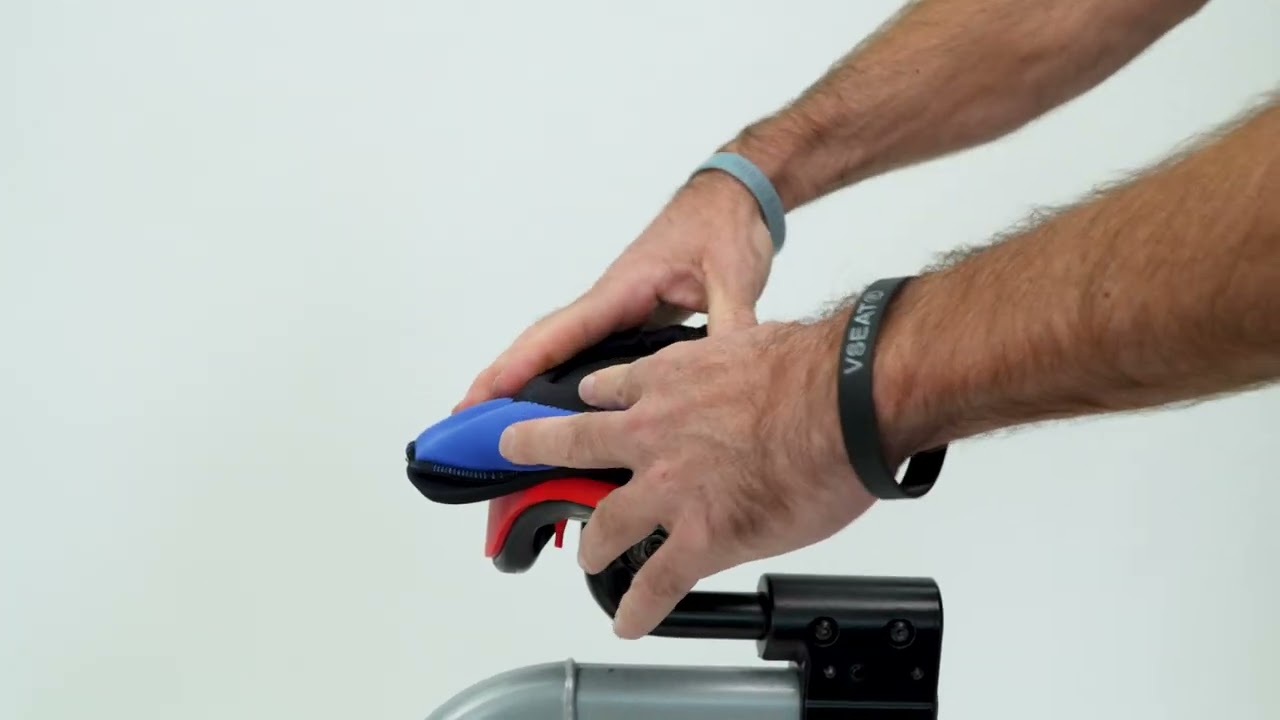
Installing the Padded Cover on the VSEAT®
Begin by turning your VSEAT® cover inside out. Line up the soft pad with the VSEAT®. Begin by folding the back over first, and finish with the front. There you have it! You’re ready to go for a ride!
-
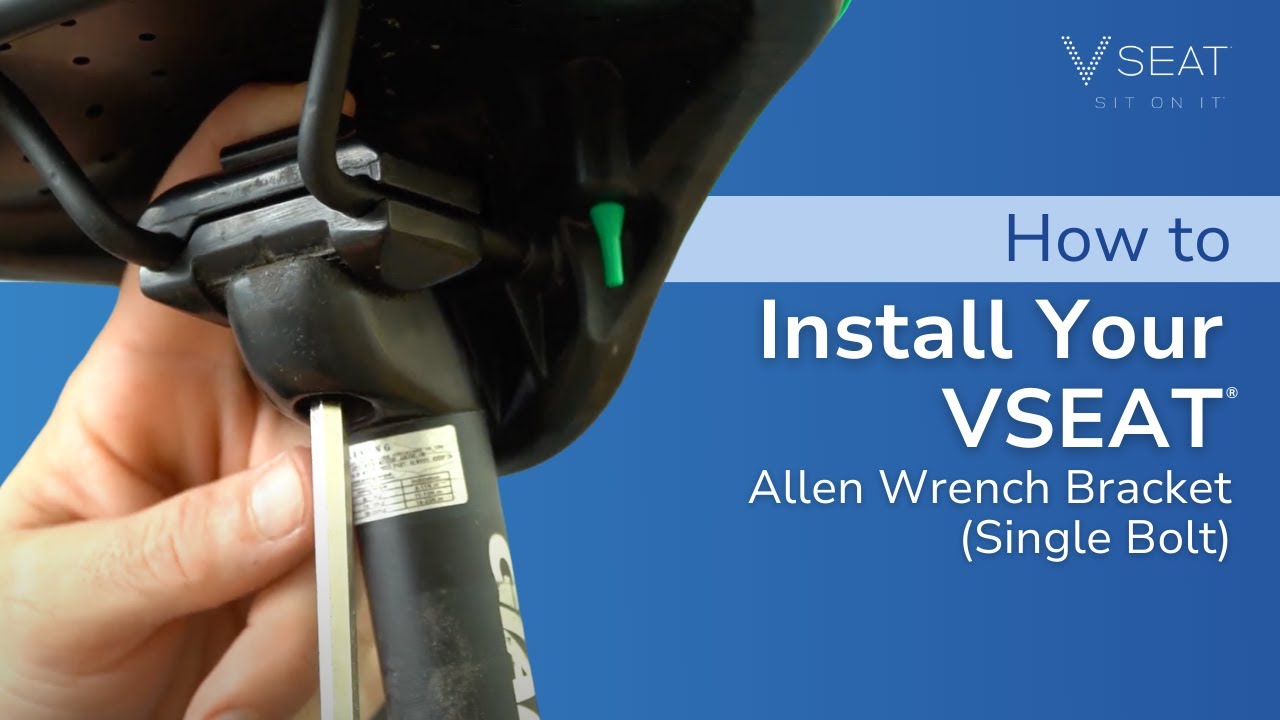
How to Install Your VSEAT® (Allen Wrench Bracket)
We’re going to show you how to install the VSEAT® on a single bolt allen wrench bracket. My personal favorite brackets. I think all bicycle seat brackets should be made this way because they’re so simple. Okay tighty righty, loosy lefty. Let’s loosen it up there. We loosen it enough so the top part of the bracket can lift up enough. We turn it 90 degrees. We lift the bracket off the top or the seat off the top. We’re going to grab our VSEAT®. We’re going to put our VSEAT® back on top of the rails.
We rotate that part of the bracket so that it locks back down. Put a little bit of pressure on the top and we tighten this back down. Make sure our seat’s straight. Give it one more snug. There it is thank you.
-
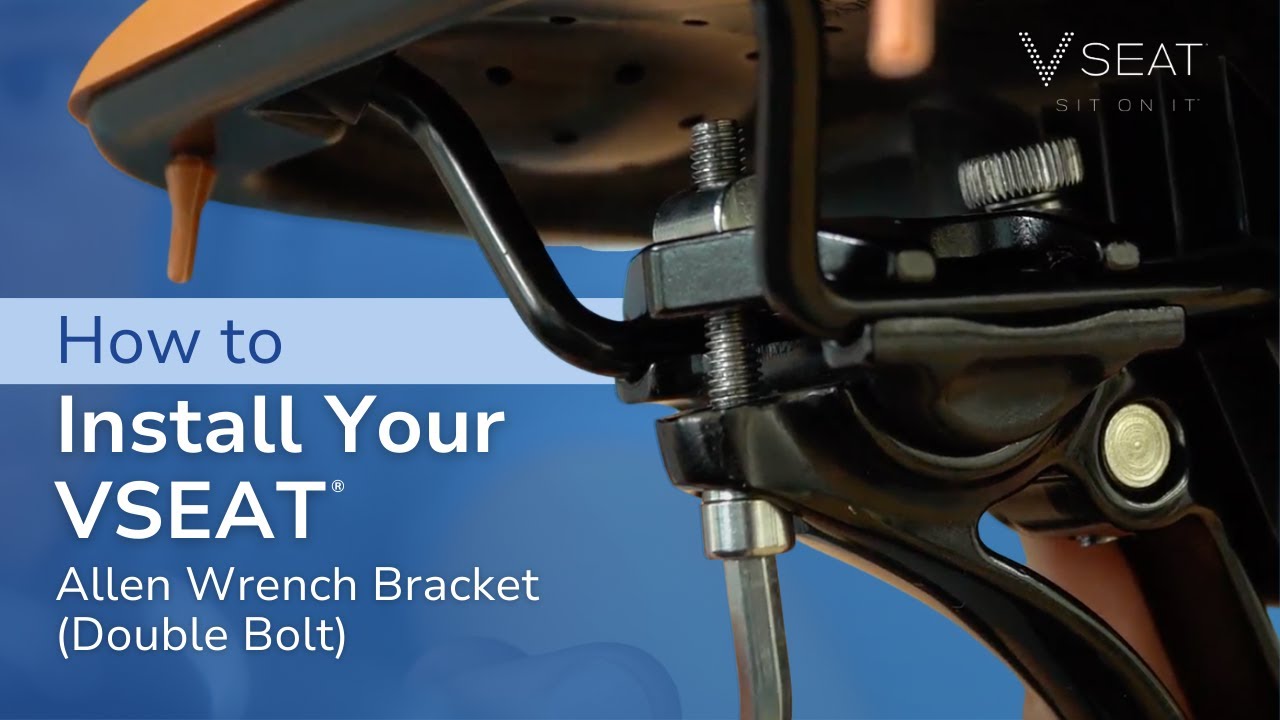
How to Install Your VSEAT® (Double Bolt Allen Wrench Bracket)
We’re going to show you how to install the VSEAT® on a double bolt bracket. Start by finding the proper size allen wrench. We’re going to come down and we’re going to loosen the back bolt first. We do this because the front bolt is all about the seat tilt and you adjust that afterward. So we reach up. We’re going to loosen this as well. We loosen the bracket enough so that the seat rails can lift over one side and slide off of the other. Let’s grab the VSEAT® and we’re going to install the VSEAT® in the exact same way.
We’re going to put in one side of the seat rails first then we’re going to slide it over and get the other side here. Once we got that in, we’re going to hand tighten down the front bolt. When we feel like we have it snug and we like our proper angle, then we’re going to use the allen wrench and we’re going to tighten the back side. We make sure it’s snug. Looks good, feels good. There’s your installation.
-
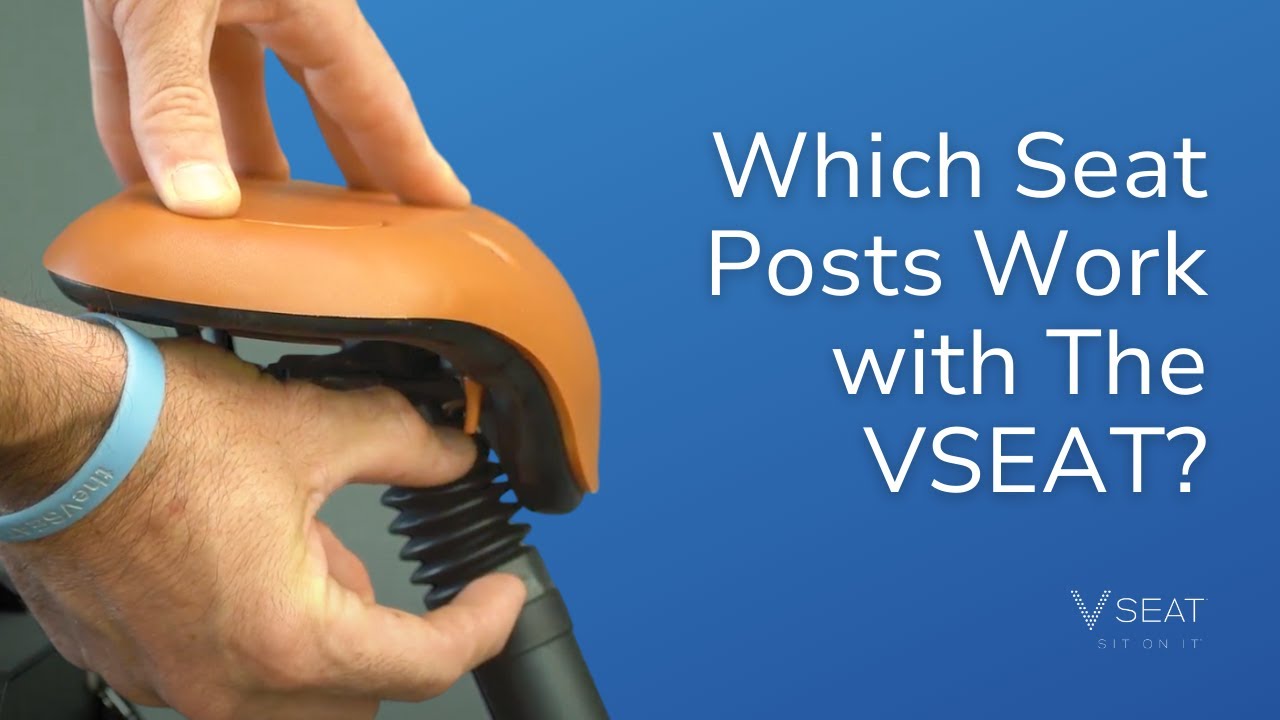
Which Seat Posts Work with the VSEAT®?
Okay. We’re here to talk about compression posts that are compatible with the VSEAT®. Any compression post in which the compression happens internally inside of the post is going to be great for the VSEAT®. Essentially what happens is, there’s a spring inside here when the rider hits a bump or goes over anything that they need the compression for, it all happens internally here. Any one of those compression posts work great with the VSEAT®; and how about those that don’t work with the VSEAT®.
The other type of compression post that exists basically all the compression happens here at the top externally, and you can see the compression. Usually it’s in the shape of a triangle and when the seat compresses, the triangle goes forward. Those do not work with the VSEAT®, because of our base which comes down in the front. It hits the base and stops it from compressing.
-
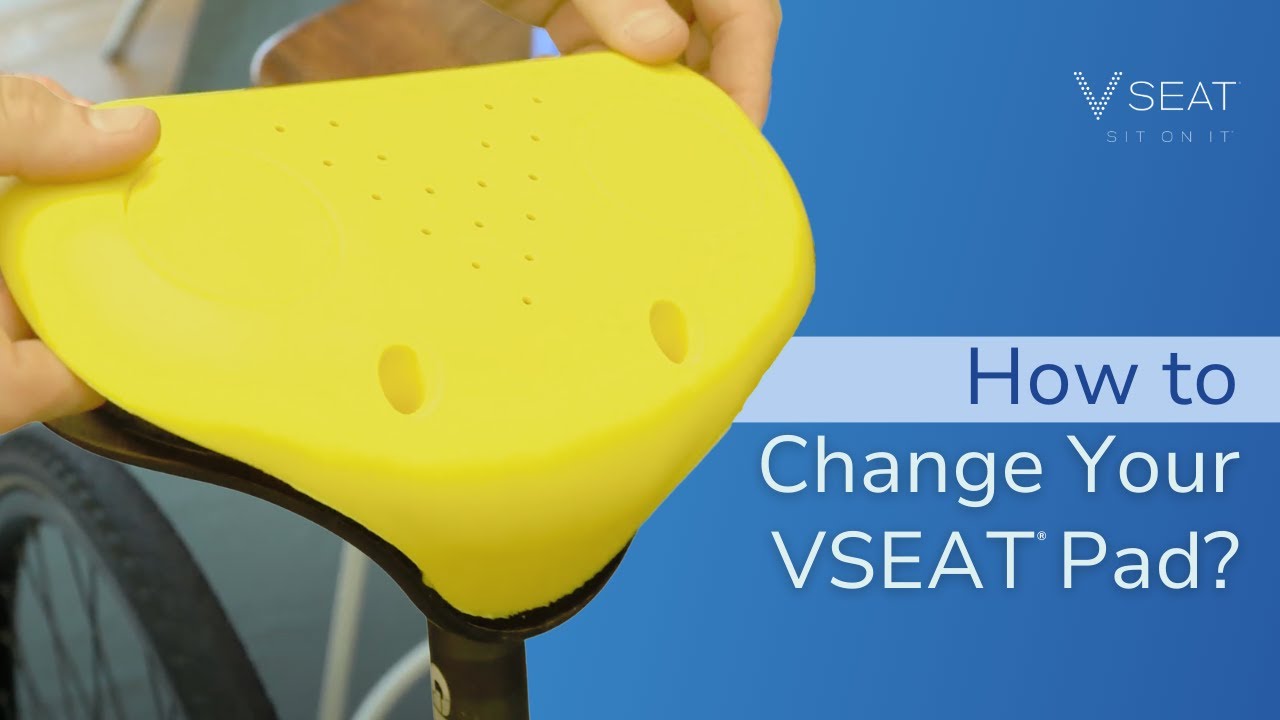
How to Change Your VSEAT® Pad
You can change the color of your pad. Let me show you how. Underneath here are four tabs. All you have to do is make sure those tabs pop off with each part of this, and voila the pad comes off. While I have this pad off, let me explain to you the build. See this cool honeycomb design? Very cool, very structural. Let’s change our color. Grab your new pad, line up your tabs with the four holes in the base, pop them through until you hear a pop, and you’re done changing the pad. It is a very cool thing you can do with the VSEAT®.
-
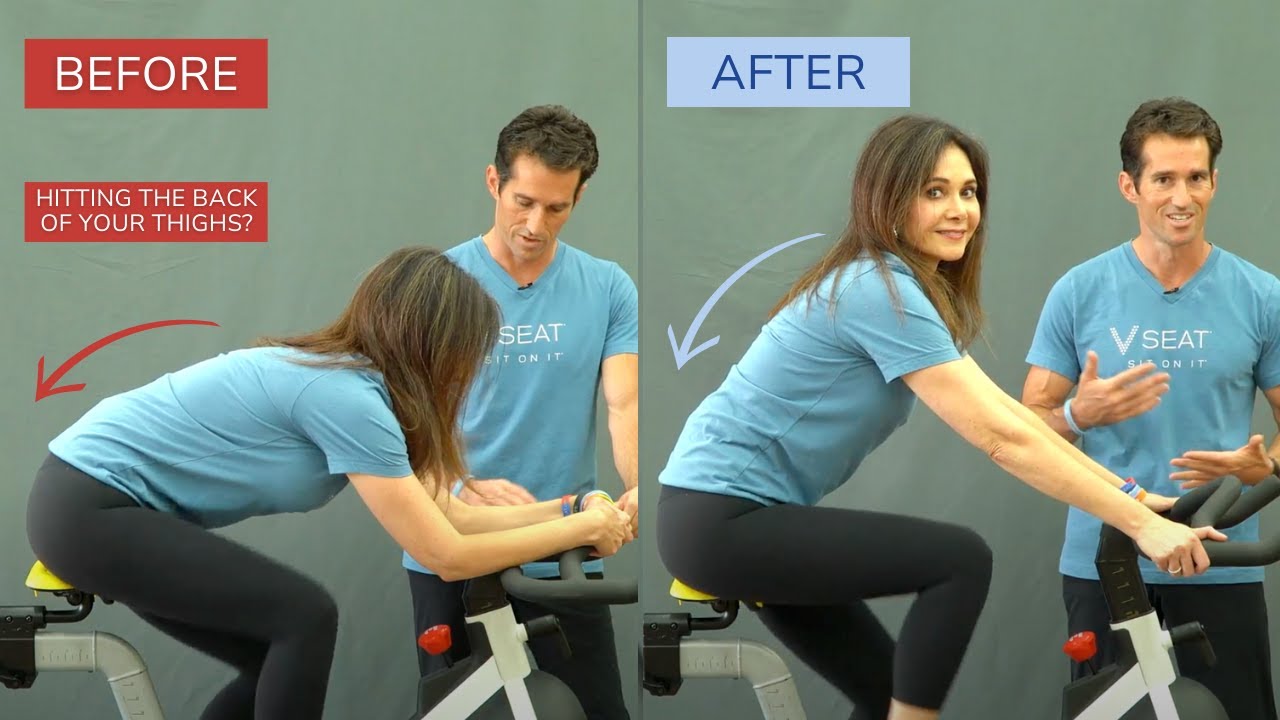
Tips to Set Up Your Bike Riding Position for Optimum Posture and Comfort
Hey guys today we’re going to talk about the ideal setup for your VSEAT®. Let’s begin with step number one. When you first get your VSEAT® ideally you want your VSEAT® to be at the same height or lower than your handlebars. I think we’re pretty good here. Okay, your next step after you get the VSEAT®, you want to make sure that when you sit on it, you can sit all the way up and it’s holding you. That you’re actually being supported. If you feel like you’re falling too far forward on the VSEAT®, you have it tilted too far forward.
Ani go ahead and please stand up. So, as you can see, this is basically level with the ground. But let’s just be sure it’s level. Okay, we’re looking pretty good now. On a spinning bike it’s ideal to have it level, on an outdoor bike you may want it tilted a little bit more forward. Go ahead and sit back down on your seat. Ani do you feel like the seat is hitting the back of your thighs at all? Maybe a little bit. If you feel like it’s hitting the back of your thighs, you can tilt the seat slightly forward but don’t overdo it. A little bit goes a long way
Now let’s just experiment right here. We’re going to lower her handlebars down. Do you notice any kind of difference when we lower these? Yes, if it does hit me behind the leg where the hamstrings are. So if you’re finding you’re getting that on your bike, especially a road bike, we will personally send you a handlebar riser to raise your handlebars up a little bit, which really makes a big difference in your ride. Go ahead and lean forward. This is way better. Perfect.
Ideal for a road bike is a handlebar riser. Not only because it’s more comfortable with the VSEAT®, but it’s actually a lot better on your neck and your spine. So there’s an added bonus with it as well. Those are the things you want to keep in mind for a proper setup for your VSEAT®.
-
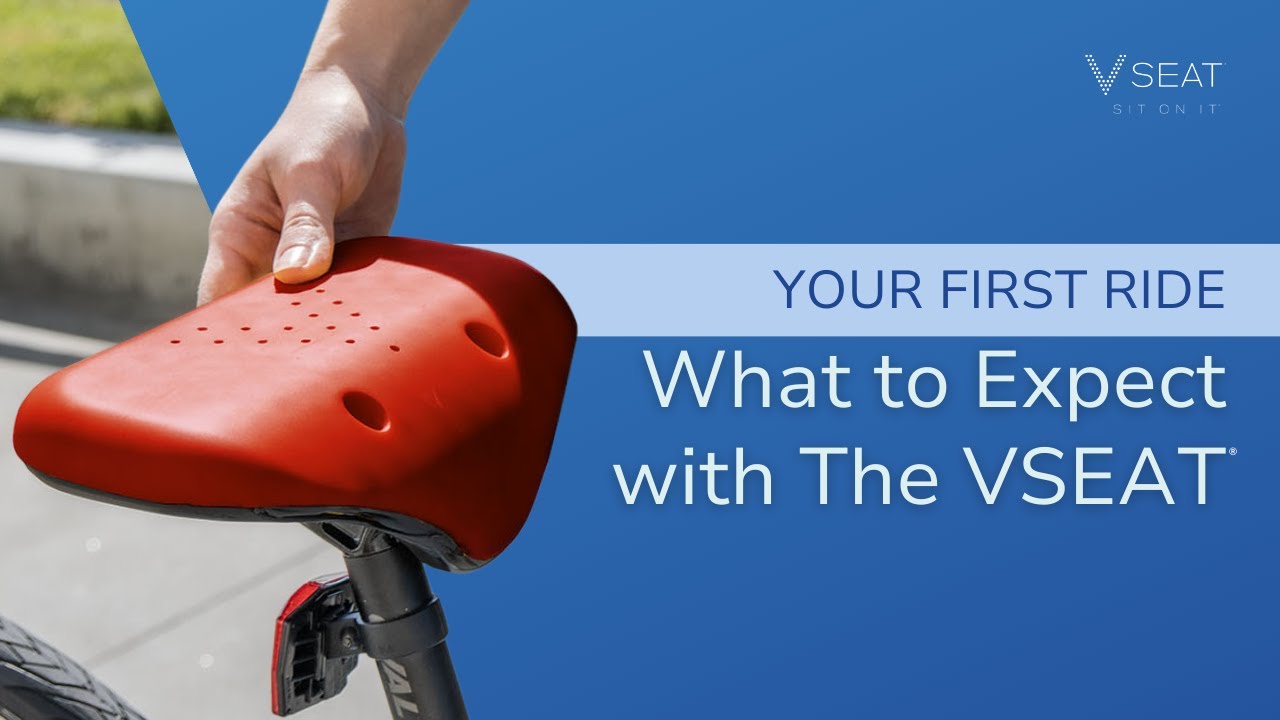
What to Expect on Your First Ride and How to Adjust to a Noseless Bike Seat
You may be wondering what it’s like when you first get your VSEAT®. Well it’s going to take some adjustment. Yeah, similar to some of our customers, when you first ride the VSEAT® you feel a lot of pressure on your sit bones. The pressure you’re feeling on your sit bones is the same pressure that was compressing the soft tissue before causing all kinds of medical issues. As soon as you get through this adjustment period, that all goes away, and magic begins to happen.
Some of our customers, they get it right away. Some of our customers it takes a little bit longer, two to three rides. But everybody, every single one of them that sticks with it is very happy they did. Trust us, give it that one extra ride or two. Because once you get used to it, you’ll never want to go back to your saddle again, and that’s all it’s going to take to get you to ride healthier and longer.
-
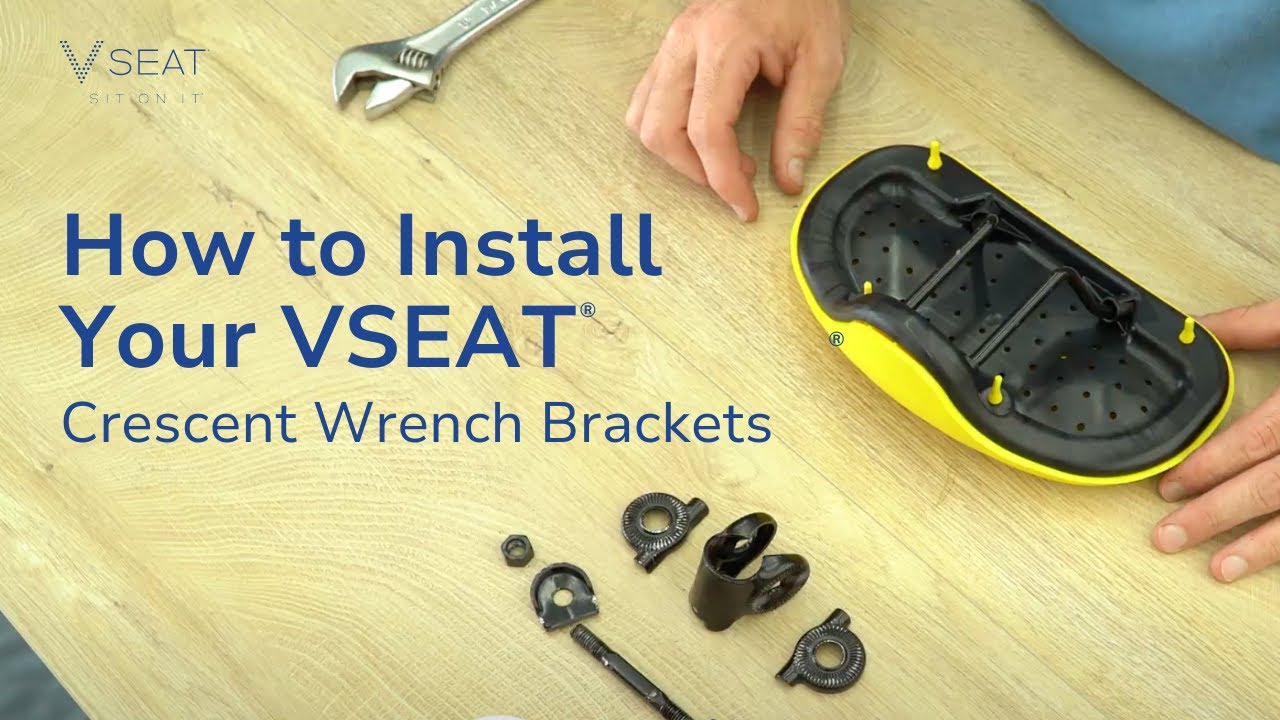
How to Install Your VSEAT® (Crescent Wrench Bracket)
Here’s how to install your VSEAT® on a crescent wrench bracket, also known as the knuckle buster bracket. Let’s begin with loosening the nut. Okay, so here we go, tighty ready loosy lefty. We’re going to loosen this enough so that it can be lifted off of the post. We got this off, now we’re going to loosen it all the way. Unscrew this side so it can loosen off. We take this off. We’re setting our pieces so we can see what we’re doing.
This is another little piece that helps hold the bracket to the rail, so we’re going to put that right next to the nut. The nut goes against that. Then we’re going to take the bolt out and we’re going to keep this whole bolt piece together as one piece, because that’s what’s going to go back in when we move it to the next bracket. This piece right here comes off by bending off, this is three parts. Now that we have this apart, we’re going to switch to our VSEAT®. We’re making sure our VSEAT®, the front of the VSEAT® is the same as the front of this when we took it off, so that we don’t get confused.
We’re going to do it the exact way that we took it off. We go put the teeth outside part of the rail holder against the post bracket. We’re going to put it up against the rail. Then, we’re going to take the outside of the post bracket part with the teeth and we’re going to put it against the rail of the VSEAT®. We’re going to bring them together and we’re just going to push them and wedge them, so that they hold each other in with a compression fit.
Then, we’re going to re-thread our bolt. We kept the nut on the bolt along with the outside of the rail bracket. We’re going to slide that back through until it comes all the way in on this side. Then, we’re going to put the other bracket on the outside of the rail bracket part back over, so that it holds that in. Then, we’re going to hand tighten the nut on this side. Remember when starting with your seat, if this is your first time riding with it, ride with the seat level. We want this nice and snug, so that the seat shouldn’t move at all on your post. Feels good, looks good to me. There’s your VSEAT® installation on a crescent wrench bracket.
-
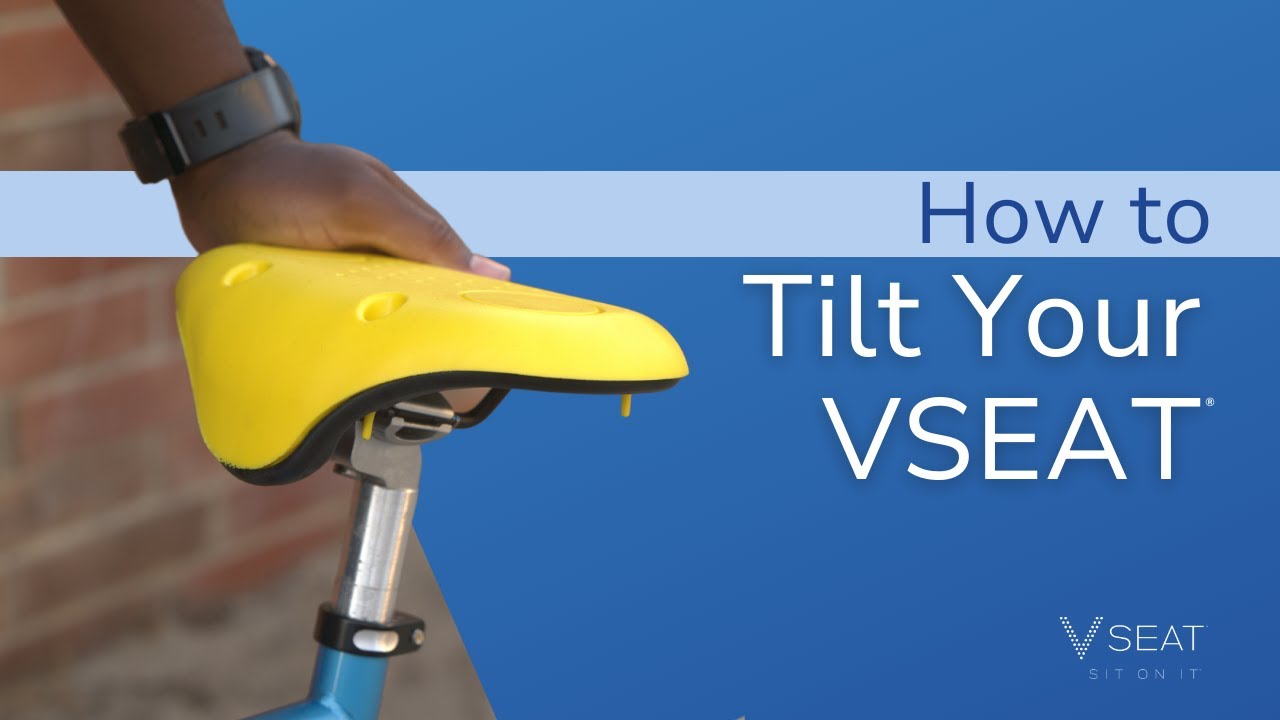
How to Tilt Your VSEAT® Correctly
Hey guys. We discussed the importance of tilting your VSEAT®. Here’s how you do it. Start with your VSEAT® level. Depending on the type of your bracket is going to determine how you can tilt your seat. This particular bracket is a single bolt allen wrench bracket. So I’m going to loosen it up. Always remember, tighty righty, loosey lefty. I’m going to tilt my VSEAT® slightly forward. Only one click forward because a little bit goes a long way. Then I’m going to tighten it back up check our angle. Looks good to me.
-
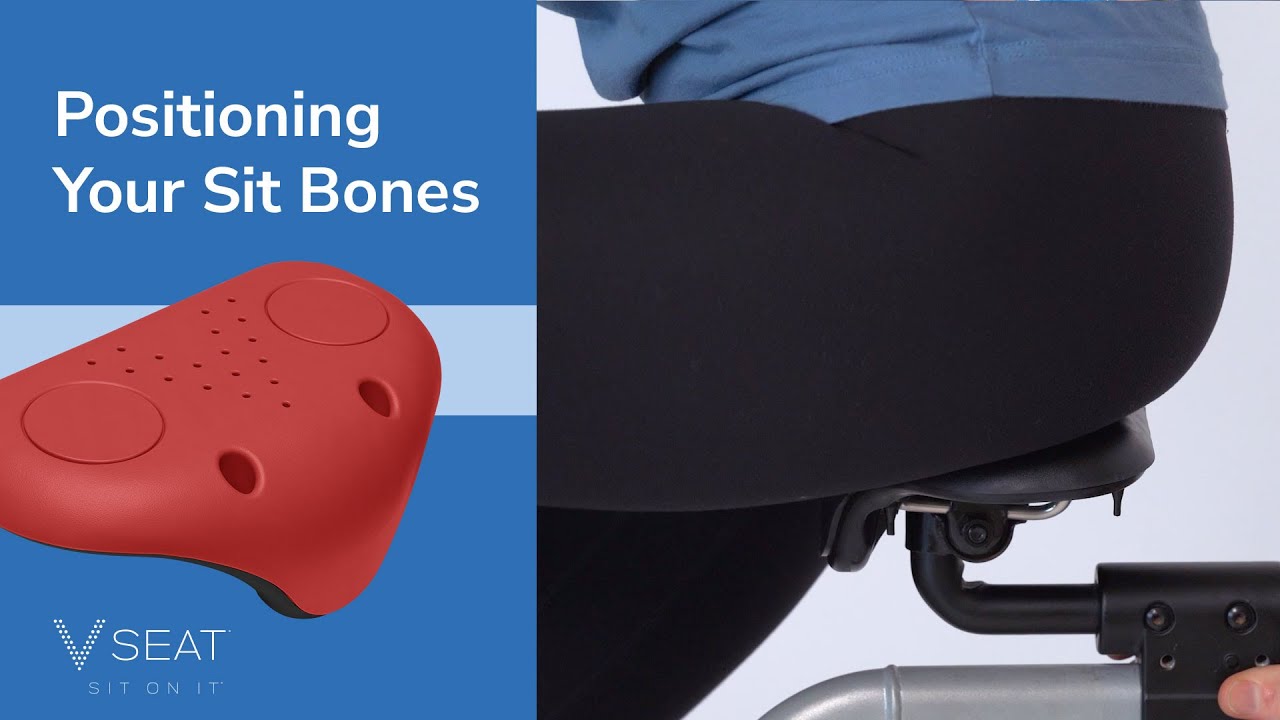
How to Position Your Sit Bones on the VSEAT®
Okay. Let’s discuss the proper support of where you should be feeling it when you’re riding. Which is on your sit bones, hence the name sit bones. Go ahead and have a seat. Now we’re going to get all up and close and personal with Ani here, so that we can really get an idea of the support. Go ahead and do some revolutions. So as you guys can see, there’s really I mean there’s nothing here. Right. If you were to zoom up, you can see that she is really only on her sit bones. Okay, so now let’s come around to the back side and see what’s going on.
So if we take a look here, I mean literally, you can see that her sit bones are going right on top of these circles. Go ahead and sit back down. Boom, perfect. Let’s take a quick notice exactly how her spine is aligned. The beautiful thing about sitting on the VSEAT® is that you’re only going to be using your sit bones. And to maximize the efficiency of the way that the VSEAT® works, it’s going to require you to sit with good posture naturally.
If you’re not sitting with good posture on the VSEAT®, you’re not going to have as much contact as you should. So just another added benefit of the VSEAT® is that you’re going to gain awesome postural muscles. Okay. So now we’re going to put her on a traditional saddle and we’re going to look for the the subtle differences, that aren’t going to be so subtle between the traditional saddle and the VSEAT®. All right go ahead and sit on it. I know it’s painful. Okay, so once again getting fresh with Ani here and zooming up.
Let’s take a look exactly where this is hitting her. And well, unfortunately, you can see this big long protruding nose jutting out here. You can only imagine what is being supported on that. Let’s come around to the backside and take a look at the backside. Now this is my sit bone. My sit bone is not even touching the saddle. Okay, so as you heard, her sit bones are not even touching the saddle. In fact, as you guys are seeing, other than the nose sticking out the front, can you even see the saddle? No. And that’s a bad thing, that means it’s disappeared up into that soft tissue. We’re barely hitting the sip bones.
I’m just going to make a little experiment here, this is science. I think they’re out here on the outside and that is not good. So this is crushing her right now and I don’t know how anybody can endure that. So one of the things that I feel when I’m sitting on the traditional saddle is my labia, the vaginal area, the labia are in complete contact with the nose. And if I lean forward, if I want to ride more aggressively, everything in that area is in complete contact. There is no freedom.
Everything is going to hurt when I get off this thing. I know it. Okay that’s enough. I can’t stand to see my partner in so much pain. Let’s put a VSEAT® back on. Okay, we got a VSEAT® back on. Let’s just have her tell us about the difference. Okay, so sitting up, nothing, nothing, the only contact point are my sit bones. And if I lean forward, nothing again. It is great, there is no contact. This is total freedom and joy, totally, and it’s not just because it’s our product. It really is great. So you’ve seen the difference now. If you haven’t watched our fitting video make sure you check out the fitting video and you can get your VSEAT® on our website. Check it out.